Secrets of La Alhambra in Granada, Nasrid art evokes a distant Christian and Muslim era, where echoes of battles resound on its walls and in the murmur of water.
Legends, mysteries, horses, palaces, fortress,…an ancient Muslim city that today lives and breathes with each visitor who walks its streets and magnificent rooms.
But what is the Alhambra in Granada?
The Alhambra is a Nasrid palace complex and fortress called the alcazaba , (from Arabic: القصبة al-qaṣbah ‘citadel’). All this with magnificent patios and gardens on top of the Sabika hill, integrated into a natural environment close to the Sierra Nevada in Granada, Andalusia, Spain.

Its maximum splendor is found in the interiors of the Nasrid palaces, whose decoration is among the pinnacles of Andalusian art .
During the Nasrid period, the Alhambra was an autonomous city separated from the rest of the Granada city below. It contained most of the amenities of a Muslim city, such as a Friday mosque, hammams (public baths), roads, houses, artisan workshops, a tannery, and a sophisticated water supply system.
The Alhambra is part of the UNESCO World Heritage Site and is one of the most famous monuments of Islamic architecture and one of the best preserved in the historical Islamic world.
The conservation and maintenance criteria of such a special place advise restricting its annual visits to less than three million. The protection it enjoys is essential, which is why tickets are regulated.
What does the name Alhambra mean?
The Alhambra (/ælˈhæmbrə/, Spanish: [aˈlambɾa]; Arabic: الْحَمْرَاء, romanized: Al-Ḥamrāʾ, pronounced [alħamˈraːʔ], literally means ‘The Red One’.
The reference to the color “red” in the name is due to the reddish color of its walls, coming from the iron oxide in the local clay used for this type of construction.
How old is the Alhambra?
The complex was started in 1238 by Muhammad I ibn al-Ahmar, the first Nasrid emir and founder of the Emirate of Granada, which was the last Muslim state of Al-Andalus.
When did it stop being an Arab city and why?
Abu Abdallah Muhammad XII (Arabic: أبو عبد الله محمد الثاني عشر) (c. 1460–1533), known in Europe as Boabdil , in Spanish, was the twenty-second and last Nasrid ruler of the Emirate of Granada in Iberia.
Boadil surrendered the Emirate of Granada in 1492 without the Alhambra itself suffering any damage when the vastly superior army of the Catholic Monarchs (King Ferdinand II of Aragon and Queen Isabella I of Castile) arrived at the gates of the city.
Ferdinand and Isabella were so amazed when they entered that they established the royal court in the Alhambra , and it was there that Christopher Columbus received royal backing for his expedition.
After being abandoned for centuries, the Alhambra was rediscovered after the defeat of Napoleon I, among others, by Washington Irving , whose Tales from the Alhambra (1832) brought international attention to the site.
The Alhambra was one of the first Islamic monuments to become the object of modern scientific study and has undergone numerous restorations since the 19th century.
What palaces does the Alhambra house?
The Nasrid palace of the Muslim kings was made up of three different and independent areas:
- the Palace of Mexuar, corresponds to the semi-public part of the palace or selamlik, where the administration of justice and the office of State affairs were carried out;
- the Palace of Comares , typically Muslim. This was the official residence of the king.
- and the Palace of the Lions, with Christian influences. It was the private area of the palace, where the Harem was located .
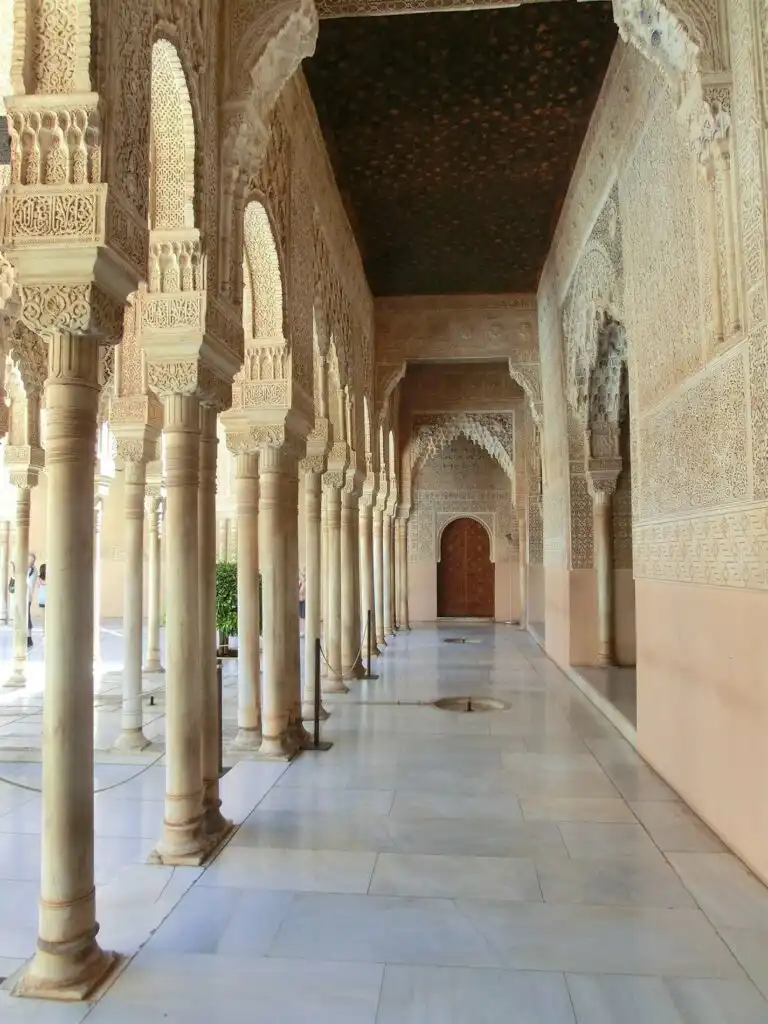
After the capture of Granada by the Catholic kings, his grandson Carlos V decided to build a new palace inside the Alhambra that bears his name:
- The Palace of Carlos V. Renaissance building whose construction began in 1527, but was prolonged and left unfinished after 1637. The building has never been the home of a monarch and remained without a roof until 1967.
However, the Alhambra has always maintained its nature as a Muslim palace.
Through how many Nasrid doors can you enter the Alhambra?
The Alhambra has four exterior doors from the Nasrid period:
- Gate of Weapons (Bab al-Silah)
- Gate of the suburb
- Gate of the Seven Floors (Bab al-Gudur), also called the Pools, through which Boabdil abandoned the Alhambra on January 2, 1492, handing over the city to the Catholic Monarchs, who ordered it walled up as a sign of respect.
Just like many places in the Alhambra are known for their legends, the Gate of the Seven Floors is one of them.
Its name comes from the belief, based on stories told at that time, that under the tower there were seven lower levels in which the last Muslim king of Granada had left a buried treasure.
So far only three levels have been found, with skylights for the artillery and cylindrical vaults, to which it is possible to go down on certain days of the month.
Gate of the seven floors. Enclosure of the Alhambra in Granada.
And the Gate of Justice (Bab al-Sharia). If you ever dreamed of conquering Granada, this is your door.
Legend has it that its strength was such that, even receiving the attack of a thousand enemy armies, it would not fall.
For this reason, only the end of the world would bring it down, and that would happen when the hand carved in its outer arch touches the key carved in its inner arch.
So, no knight on horseback could touch the tip of his spear with said hand carved on the bow. If someone was able to do it, he would conquer the Alhambra and be crowned King of Granada.
You are warned @ 🙂
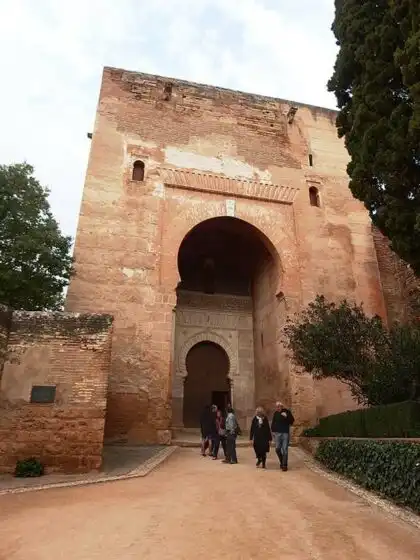
How does the Alhambra speak to you?
The Alhambra speaks to you. She tells you about herself in Arabic at each stay.
Through its walls it describes its history, from the enormous respect for Allah, through the beauty of the place, a garden of paradise on earth, to the subtle threats of the lord, the sultan.
In addition, there are precious poems, the pinnacle of Arabic poetry.
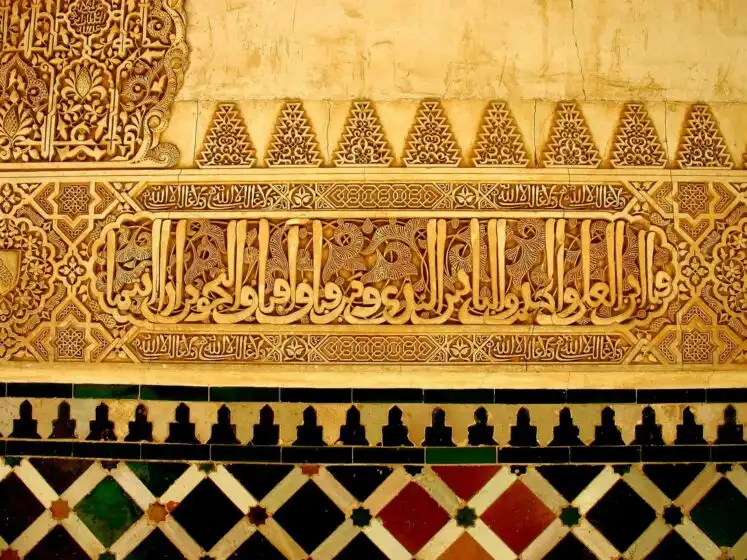
Why is it still standing?
The Alhambra has survived wars and earthquakes for centuries thanks to the fact that the walls are made of rammed earth and the columns have a sheet of lead between the base and the column, which makes the building more flexible if there are tremors.
In some patios, the gray sheet of low lead looks very good, which is an architectural marvel of the time.
Do you know the legend of the Patio de los Leones?
Legend has it that a very beautiful and kind Arab princess named Zaira and her cruel and ruthless father, the king, traveled to Granada and stayed in the Alhambra . Her father always kept Zaira inside the palace with the only company of a talisman that her mother gave her before she died.
Inside the Alhambra, the princess found a beautiful, well-lit patio where she used to spend most of her time. One day, a daring boy decided to jump over the fence to declare his love to the princess since he had seen him from outside and he was amazed. She insisted that he leave her because if her father found out about her or saw him, he would not hesitate to cut off her head. The boy, named Arturo, left with the promise to return.
The day Arthur returned, the king locked him up and sentenced him to die. The very saddened young woman entered her father’s bedroom to beg for mercy, upon entering she found the king’s diary, she thought that she should not read it, but finally decided to open it. To her surprise, she found the following on one of the pages: «I have already killed the king and the queen and I have seized Zaira. Thanks to my 11 men I have managed to occupy the throne and be the king. Now Zaira will think I’m his father. I hope the princess never finds out about the curse of her talisman.”
The enraged and hurt young woman called the king and his 11 men in the courtyard, crying, she asked them if what she had read was true. The king, calm to be surrounded by his 11 men, told him that it was true. At that very moment, the talisman was activated as the young woman herself learned the truth. The talisman turned the king and his 11 men into stone lions since, at that moment, the princess felt the rage of a lion.
For this reason, from that moment on, this patio is called “El Patio de los Leones”. The fountain that is in the center of the patio has 12 stone lions around it that correspond to the king and the 11 men.
Princess Zaira rescued her beloved Arthur and they were happily ever after.
Every corner of the Alhambra is full of legends, mystery, whispers of water and magic.
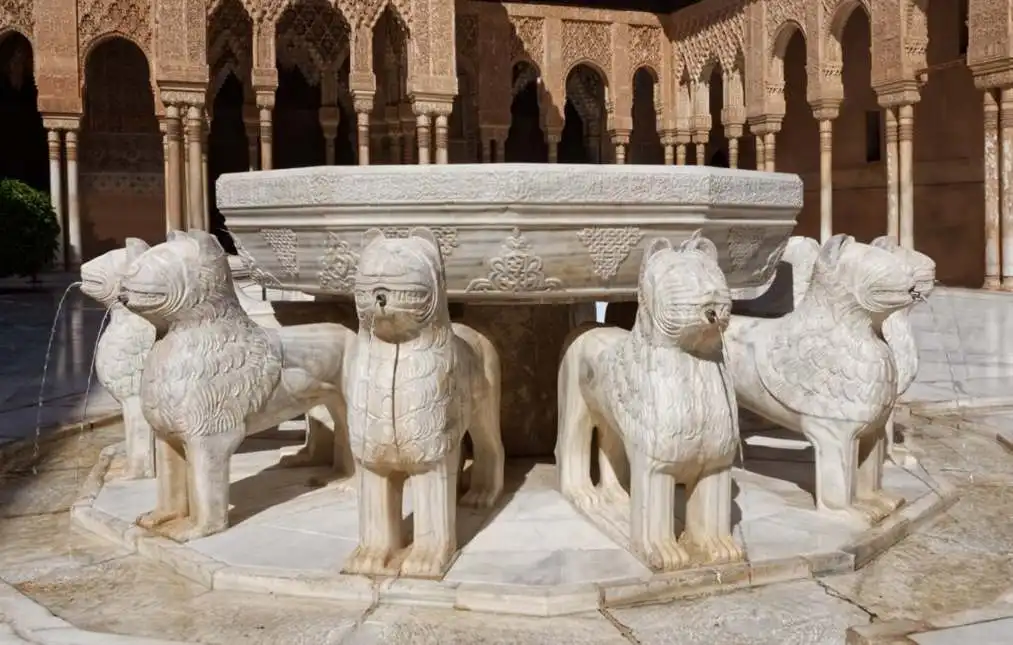
Any recommendation?
Yes, enjoy it without haste.
Soak up its magic, its mystery, its sounds, its art and its Nasrid history.
The visit usually lasts three hours in its tour of the Alhambra .
The Alhambra de Granda is the only remaining Moorish palace city in the West.
Experience it at least once in your life.
That you will take home forever.
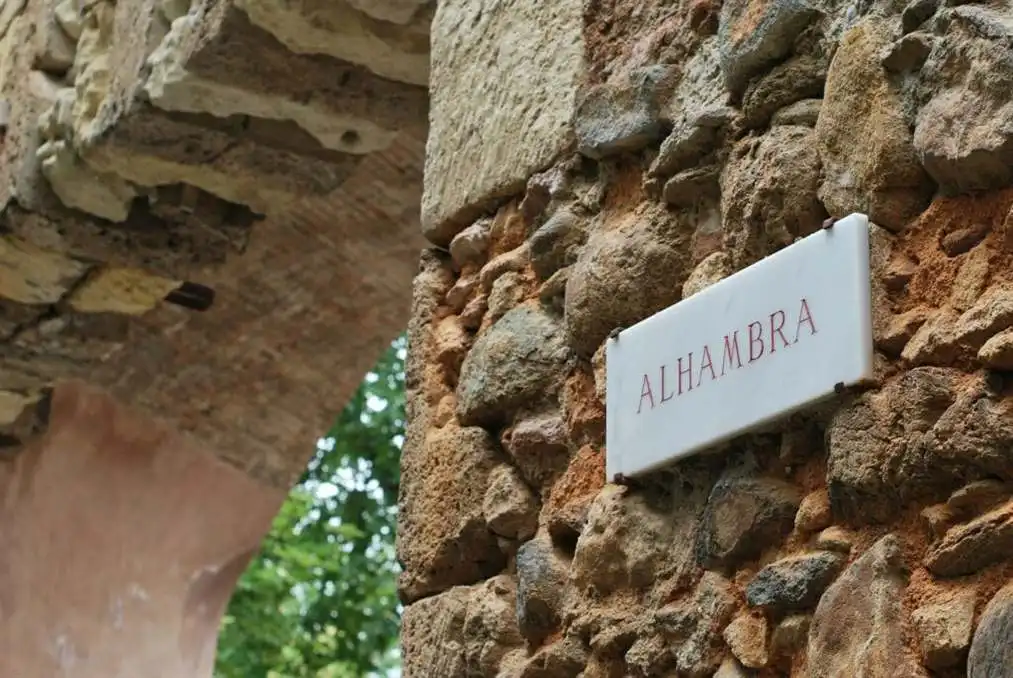
More information and reviews:
- en.wikipedia.org-Alhambra Click here
- en.wikipedia.org-Alhambra Click here
- en.wikipedia.org-Muhammad XII of Granada. Click here
- Alhambra-patronato.es-Palace of Charles V Click here
- alhambradegranada.org-Nazari Palaces Click here
- en.wikipedia.org-Washinton Irving. Click here
- claritasturismo.com-Cláritas Tourism. The 5 most mysterious Legends of Granada Click here
- pixabay.com-Fernando Villadangos. Alhambra Click here
- pixabay.com-Ricardo Manzano.Landscape-autumn-alhambra-palace. Click here
- pixabay.com-Alice_AlphabetAlhambra-Nasrid Palace-Spain. Click here
- wikimediacommons.org-Palickap-Granada,Alhambra,Puerta de la Justicia. Click here
- pixabay.com – McVal Osborne . Alhambra-mosaic-pattern-spain. Click here
- pixabay.com-Wilfried Santer. Source of the Lion. Alhambra. Click here
- pixabay.com – Joakim Roubert. Stone. Click here
- youtube.com-RTVE. Filming of ‘Isabel’ at the Justice Gate of the Alhambra Click here
- youtube.com-Alcotan304. Gate of the seven floors. Enclosure of the Alhambra in Granada. Click here


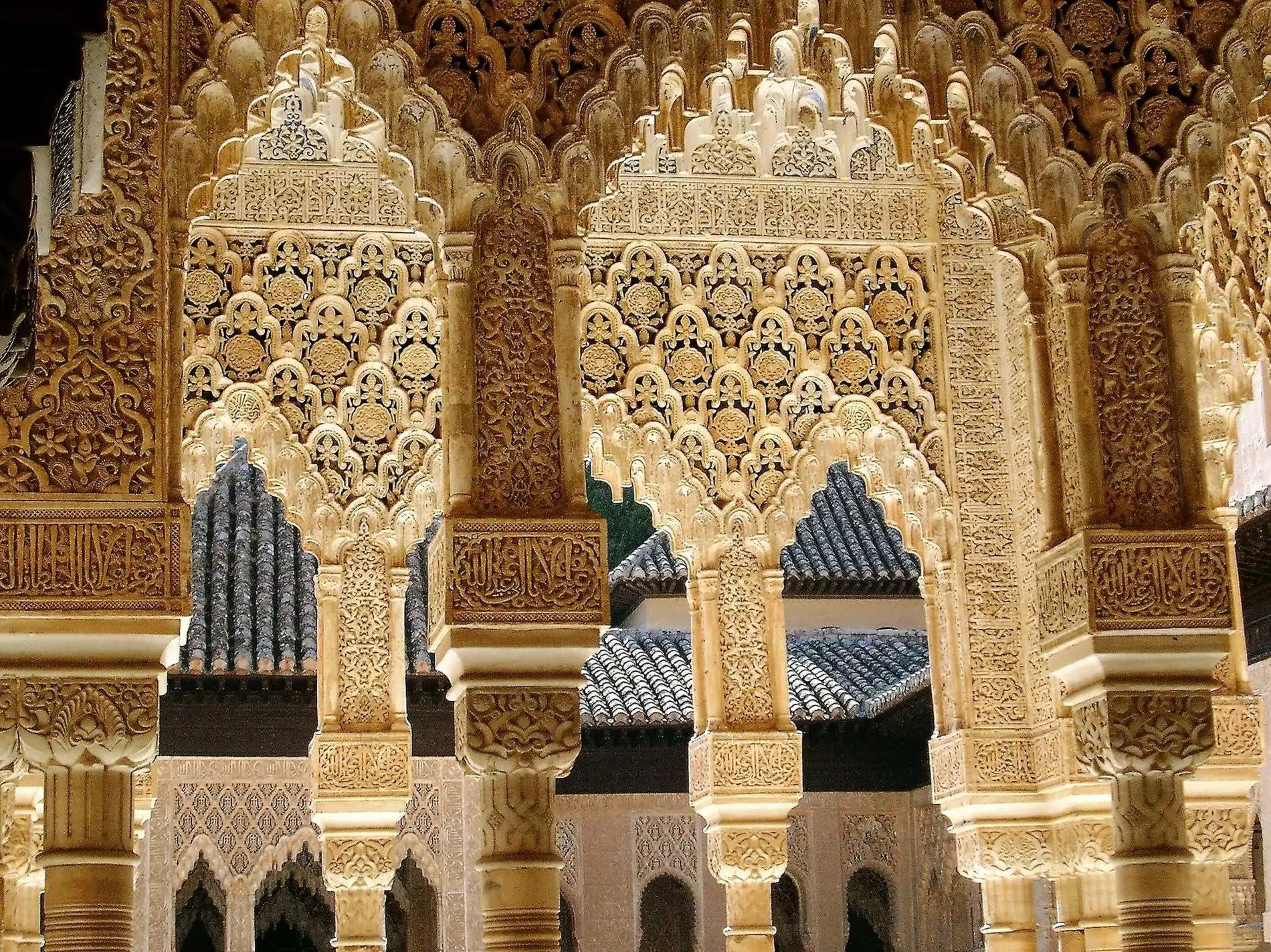





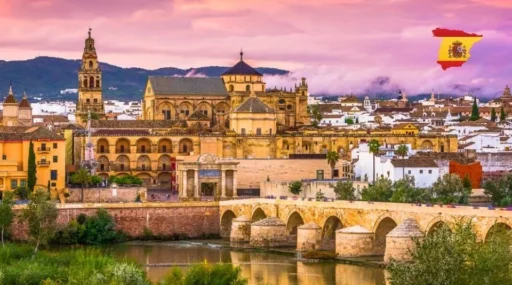


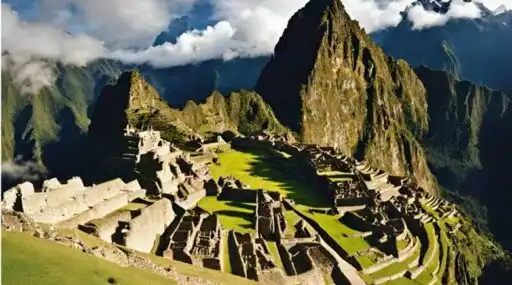




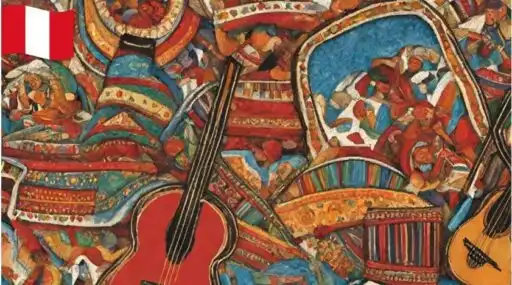


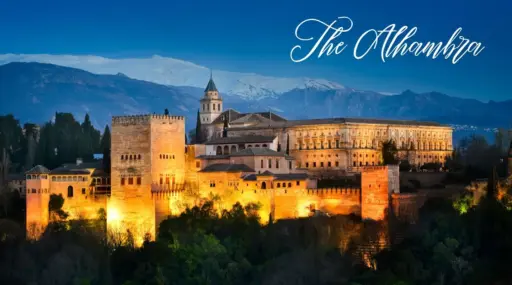
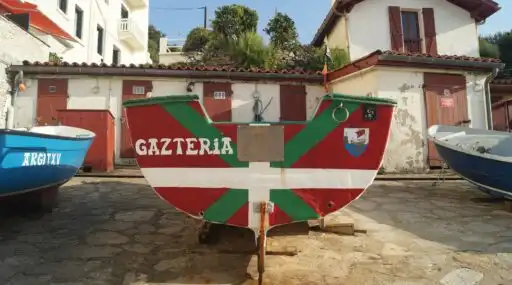












Leave a Reply